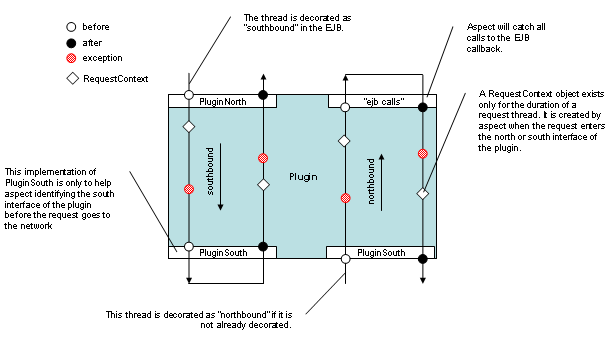







|
The following section describes how to manage and configure EDRs, CDRs, and alarms in Oracle Communications Services Gatekeeper.
Event Data Records (EDRs), are generated in the following ways:
EDRs are the base component of both CDRs and alarms: they are, in fact, subsets of EDRs.
In order to categorize the objects in the EDR flow as either pure EDRs, alarms or CDRs, the EDR service uses an EDR configuration file:
$DOMAIN_HOME/config/custom/wlng-edr.xml
The configuration file contains a set of sections:
Out-of-the-box, Oracle Communications Services Gatekeeper comes with a set of pre-defined descriptors. Changing and adapting the descriptors is done as a part of an integration project.
The XML configuration file can be edited and reloaded using the EDR Configuration pane, see Managing EDR, CDR, and alarms configuration files using the EDR Configuration Pane.
Listing 7-1 illustrates the structure of wlng-edr.xml. See section in Oracle Communications Services Gatekeeper Platform Development Studio - Developer’s Guide for more information.
<edr-config xsi:schemaLocation="http://www.bea.com/ns/wlng/30 edr-config.xsd">
<edr id="<ID>" description="<description>">
<filter>
<method>
<name><message response><message></name>
<class><fully qualified class name></class></method>
</filter>
</edr>
.....
</edr-config>
The following values are always available in an EDR when it is generated from an aspect:
In addition to these values, the EDR may also contain values relevant to the context of the request.

Below is a description of the contents of an EDR. Individual value fields in an EDR are retrieved by name using a key in a name/value pair.
All EDRs are passed through the EDRService. All EDRs are dispatched to a JMS distributed topic so external clients can receive them over JMS.
EDRs are not persisted in the database.
Alarms are EDRs that are mapped to alarms using the alarm.xml configuration file: see EDR categories and XML markup.
Alarms can be configured to be persisted, see Attribute: StoreAlarms.
CDRs are EDRs that are mapped to CDRs using the wlng-edr.xml configuration file, see EDR categories and XML markup.
CDRs can be configured to be persisted, see Attribute: StoreCDRs.
External EDR listeners are JMS topic subscribers, see section in Oracle Communications Services Gatekeeper Platform Development Studio - Developer’s Guide for information on how to create a EDR listeners.
To configure the behavior of the EDRService, in the managed object EdrService:
To configure the maximum number of EDRs sent in a batch to a JMS EDR listener and the maximum time to wait before the EDRs in the buffer are sent to listeners:
Managed object: Container Services EdrService
EdrService
MBean: com.bea.wlcp.wlng.edr.management.EdrServiceMBean
Below is a list of attributes and operations for configuration and maintenance.
Specifies the time-out value for a JMS batch.
Specifies if statistics is enabled for EDRService. Must be enabled for Operation: displayStatistics to be relevant.
Specifies the size of the JMS batch.
Specifies if EDRs shall be published in the JMS topic or not. Needs to be true if external EDR listeners are used.
Specifies if alarms shall be stored in the database or not.
Specifies if CDRs shall be stored in the database or not.
Displays a snapshot of the current statistics for EDRService. Attribute: StatisticsEnabled must be true in order for this operation to be relevant.
The following information is displayed:
displayStatistics()
Resets the statistics for the EDRService.
resetStatistics()
The Oracle Communications Services Gatekeeper EDR Configuration pane allows the administrator to load new EDR, CDR, and Alarm configuration files.
Open the pane by selecting OCSG <Server Name>
<Server Name> EDR Configuration from the Domain Structure in the Administration Console.
EDR Configuration from the Domain Structure in the Administration Console.
| Note: | Lock and Edit must be used. |
The EDR configuration file, see EDR categories and XML markup.
|
|
The CDR configuration file, see EDR categories and XML markup.
|
|
The alarms configuration file, see EDR categories and XML markup.
|


|